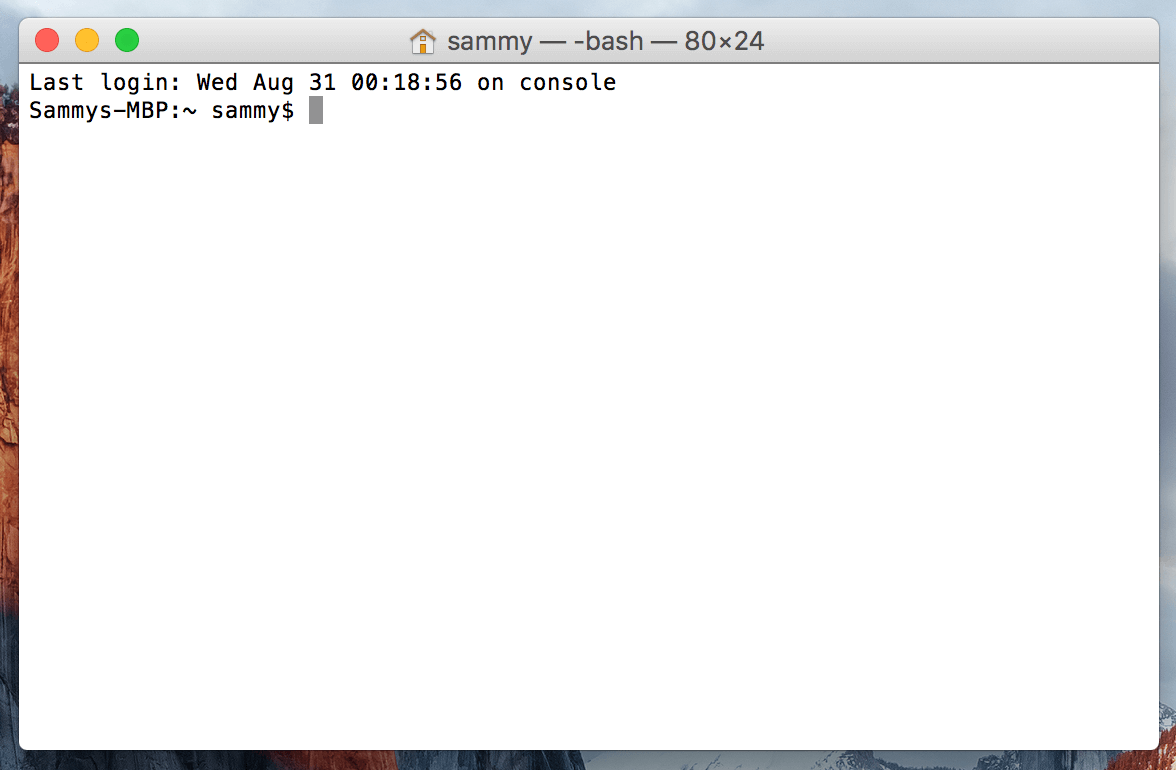- Oct 06, 2015 Installing Homebrew on Mac OS X prior to El Capitan (that is Yosemite, Mavericks and others) used to be a breeze. But with a new change in OS X El Capitan called SIP - installing Homebrew has become a bit complicated.
- An alternative to the aforementioned installation script is installing MySQL using Homebrew. This gist assumes you already have Homebrew installed, if not first read the article 'Homebrew and El Capitan' Make sure Homebrew has the latest formulae, so run brew update first-OR-make sure Homebrew has MySQL version 5.6.27 as default formulae in its.
- El Capitan & Homebrew Source: homebrew/ElCapitanandHomebrew.md at master Homebrew/homebrew. Lire la suite ».
For easy installation, use the prebuilt app bundle. 10.11 El Capitan / 10.10 Yosemite / 10.9 Mavericks: git-annex.dmg. The OSX 10.10 build works fine on my 10.11 El Capitan machine. Updated this page to reflect that. Git-annex is also in 'brew cask', automating installation from the OSX binaries.
#Install Ruby and Rails on El CapitanThe following procedure was used to install the required components on El Capitan (clean install)
First make sure Xcode Command Line Tools are installed.
Open Terminal and enter: xcode-select --install you will be prompted to start the installation. Once finished proceed.
##Install HomebrewImportant Notice:Homebrew and El Capitan, make sure to read the article!
- Enter the following command:
ruby -e '$(curl -fsSL https://raw.githubusercontent.com/Homebrew/install/master/install)' - After installation, check the installed version of Homebrew:
brew -v - Expected output: Homebrew 0.9.5
Homebrew/ElCapitanandHomebrew.md at master Homebrew/homebrew. 自分以外 mac 使わないし、一度は面倒さに屈して、上記のコマンドをしぶしぶ受け入れましたが もう我慢ならぬ ということで、install path を変更して homebrew を再 install しました。 brew bundle.
##Install Git
To use git review, you have to be in a git clone directory that already contains a (possibly hidden).gitreview configuration file (see Gerrit/Advanced usage#Setting up a repository for git-remote) Mac OS X Method 1 (Homebrew) Works on OS X 10.11 El Capitan. ##Install Git. Enter the following command: brew install git; After installation, check the installed version of Homebrew: git -version; Expected output: git version 2.6.0; Configure username and email address for all Git Repositories: git config -global user.name 'your name' git config. There is a binary installer that you can download. See also the Getting Started - Installing Git of the git website. There are several ways to install Git on a Mac. The easiest is probably to install the Xcode Command Line Tools. El-Capitan has 5 repositories available. Follow their code on GitHub. Skip to content. Sign up Why GitHub? Features → Code review; Project management.
- Enter the following command:
brew install git - After installation, check the installed version of Homebrew:
git --version - Expected output: git version 2.6.0
Configure username and email address for all Git Repositories:git config --global user.name 'your name'git config --global user.email 'your email address'
Optional : verify your configuration: git config -l
##Install Ruby Version Manager
- Enter the following command:
curl -L https://get.rvm.io bash -s stable - After installation, check the installed version of the Ruby Version Manager:
rvm -v - Expected output: rvm 1.26.11 (latest)
If you have a .bash_profile you should add source ~/.profile at the bottom of the file and reload Terminal.
- Confirm that rvm is loaded as a function:
type rvm head -n 1 - Expected output: rvm is a function
##Install Ruby
Git For Mac El Capitan
- Enter the following command:
rvm use ruby --install --default - After installation, check the installed version of Ruby:
ruby -v - Expected output: ruby 2.2.1p85 (2015-02-26 revision 49769) [x86_64-darwin15]
####Upgrade to the latest stable version of Ruby (currently 2.2.3)

El Capitan Download
Homebrew El Capitan
- Enter the following command:
rvm install 2.2.3 - After installation, check the installed version of Ruby:
ruby -v - Expected output: ruby 2.2.3p173 (2015-08-18 revision 51636) [x86_64-darwin15]
- Now set the latest stable version as the default, enter the following command:
rvm --default use 2.2.3
El Capitan Theatre Hollywood Ca
##Install Rails
Homebrew El Capitan Install
- Enter the following command:
gem install rails --no-ri --no-rdoc - After installation, check the installed version of Rails:
rails --version - Expected output: Rails 4.2.4
Comments are closed.